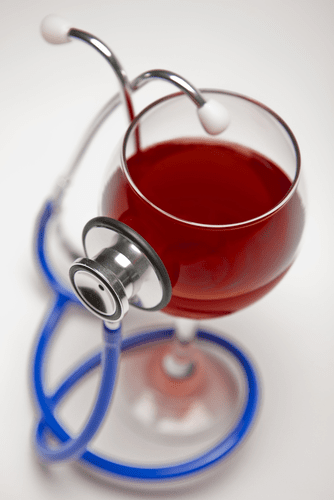Medically, it’s recognised as a type of ‘alcohol-use disorder’ which can be treated. It’s different to ‘harmful drinking’ (another type of alcohol-use disorder) which is a pattern of heavy drinking which causes damage to your health but without actual dependence. We are committed in helping individuals, families and communities achieve full recovery and freedom from drug and alcohol addiction. Down to the hazardous status of alcoholism, it is important to know where you stand with the severity of your alcohol dependency.
Study: How Does Drinking Alcohol Affect Recurrence Risk? – Breastcancer.org
Study: How Does Drinking Alcohol Affect Recurrence Risk?.
Posted: Tue, 22 Aug 2023 07:00:00 GMT [source]
Research suggests that easy access to substances, such as alcohol, can be a contributing factor to the number of high school students in the United States who live with alcohol use disorder. Drinking at a young age increases the chance of alcohol use disorder in some people. But not everyone https://ecosoberhouse.com/article/signs-and-symptoms-of-alcohol-dependence/ who has alcohol use disorder will have the same symptoms. Alcoholism can be difficult to detect from the outside, particularly early in the course of the disease. But as it progresses,
the disease has an array of effects on the body, and a number of physical signs may become apparent.
Alcohol Use Disorder: A Comparison Between DSM–IV and DSM–5
The first is to help stop withdrawal symptoms and is given in reducing doses over a short period of time. How alcohol misuse is treated depends on how much alcohol a person is drinking. If someone loses control over their drinking and has an excessive desire to drink, it’s known as dependent drinking (alcoholism). Doctors assess whether someone is dependent on alcohol by looking for signs that show their patient can’t regulate their drinking, and that they have a strong internal drive to use alcohol.

Lofexidine was the first medication approved by the Food and Drug Administration (FDA) to treat opioid withdrawals. Compared to a placebo (a pill with no therapeutic value), it significantly reduces symptoms of withdrawal and may cause less of a drop in blood pressure than similar agents. Counseling may also involve family members to develop a deeper understanding of substance use disorder and improve overall family functioning. If you accompany someone to an appointment, try to get an explanation for the person in simple language about the illness, the long-term effects and the options for recovery. There are different treatments available for people diagnosed with alcohol-use disorders. At Cassiobury Court, we offer guidance, we offer direction, we offer honesty, we offer confidentiality, and we offer the platform to facilitate alcohol dependency treatment.
End-Stage Alcohol Abuse
It’s not possible to predict if and when someone will become dependent on alcohol. For people at low risk of complications, an office visit to your primary care provider, along with at-home monitoring and virtual office visits, may suffice. People at high risk of complications should enter a short-term in-patient detox program.
- Deviance proneness theory proposes that individuals with a history of deviant behavior or inadequate socialization during childhood may be more prone to developing an AUD.
- It is most commonly used to treat major depressive disorder with or without anxiety.
- They may binge drink once or drink for a period of time before getting sober again.
- Symptoms of alcohol use disorder are based on the behaviors and physical outcomes that occur as a result of alcohol addiction.
- Intervention works by confronting the specific issues and encouraging the person to seek treatment.
The test is free, confidential, and no personal information is needed to receive the result. While intoxication doesn’t necessarily indicate the individual has a problem with alcohol, recurrent intoxication may signify alcohol misuse—or addiction. If you or someone you know has become addicted to Trazodone, seeking help early on can help prevent complications in the future.
What Increases the Risk for Alcohol Use Disorder?
Problem drinking can also damage your emotional stability, finances, career, and your ability to build and sustain satisfying relationships. Alcoholism and alcohol abuse can also have an impact on your family, friends and the people you work with. Unfortunately, many individuals with this disorder do not seek medical attention until they encounter health issues or become entangled in legal complications. The consequences of AUDs extend beyond mere addiction, profoundly impacting the lives of family members and friends and causing disruptions in interpersonal and professional relationships. Over time, heavy alcohol use and binge drinking may increase the chances of developing alcohol use disorder.
Stopping drinking abruptly can lead to seizures and can even be fatal. Not all alcohol abusers become full-blown alcoholics, but it is a big https://ecosoberhouse.com/ risk factor. Sometimes alcoholism develops suddenly in response to a stressful change, such as a breakup, retirement, or another loss.
Risk factors
One size does not fit all and a treatment approach that may work for one person may not work for another. Treatment can be outpatient and/or inpatient and be provided by specialty programs, therapists, and health care providers. In some people, the initial reaction may feel like an increase in energy. But as you continue to drink, you become drowsy and have less control over your actions. In 2021, 29.5 million Americans aged 12 or older met the diagnostic criteria for an AUD.
Some short-term risks of alcoholism include alcohol intolerance and blacking out. Unstable vital signs increase the risk of complications and can be managed with medications. People who experience severe withdrawal symptoms or DTs may require hospitalization or intensive care unit (ICU) treatment during alcohol. For most people, alcohol withdrawal symptoms will begin to subside after 72 hours. If you are still experiencing withdrawal symptoms after three days, talk to your healthcare provider. Despite the potentially lethal damage that heavy drinking inflicts on the body—including cancer, heart problems, and liver disease—the social consequences can be just as devastating.
Laboratory tests may indicate anemia, thrombocytopenia, coagulopathy, hyponatremia, hyperammonemia, or decreased vitamin B12 and folate levels as the advanced liver disease progresses. Patients with AUDs may report additional symptoms, including frequent falls, blackout spells, instability, or visual impairment. They may also report experiencing seizures, tremors, confusion, emotional disorders, and a pattern of frequently changing jobs following a few days of abstinence from alcohol. Social challenges such as job loss, separation or divorce, estrangement from family, or homelessness may also arise. During pregnancy, the fetal liver metabolizes alcohol slower due to incomplete expression of enzymes CYP2E1 and ADH.

The signs and symptoms of alcohol addiction, also known as alcoholism or alcohol use disorder, can vary from person to person. The term “alcoholism” is commonly used in American society, but it is a nonclinical descriptor. Unlike laypersons, researchers, doctors, therapists, and a host of other professionals require a consensus on what constitutes the different levels of alcohol use. In this situation it can be dangerous to stop drinking completely or too quickly without medical support. First, the body will build a tolerance, which is a natural process. As tolerance builds, a person who consumes alcohol will require a higher volume in order to experience the familiar effects.